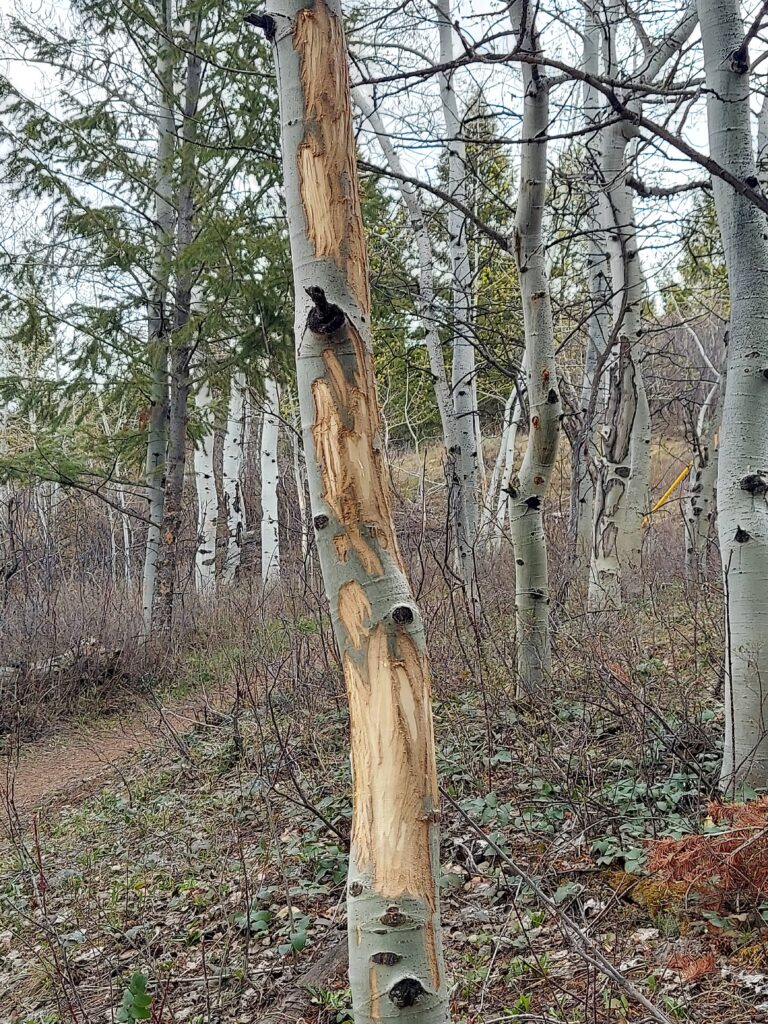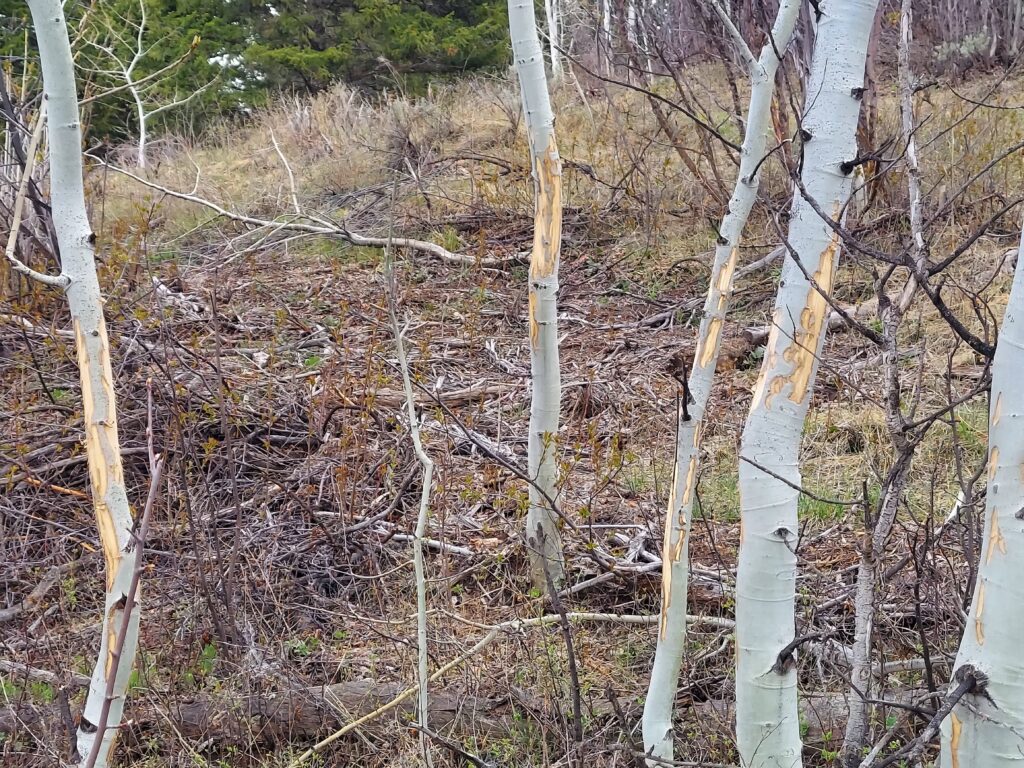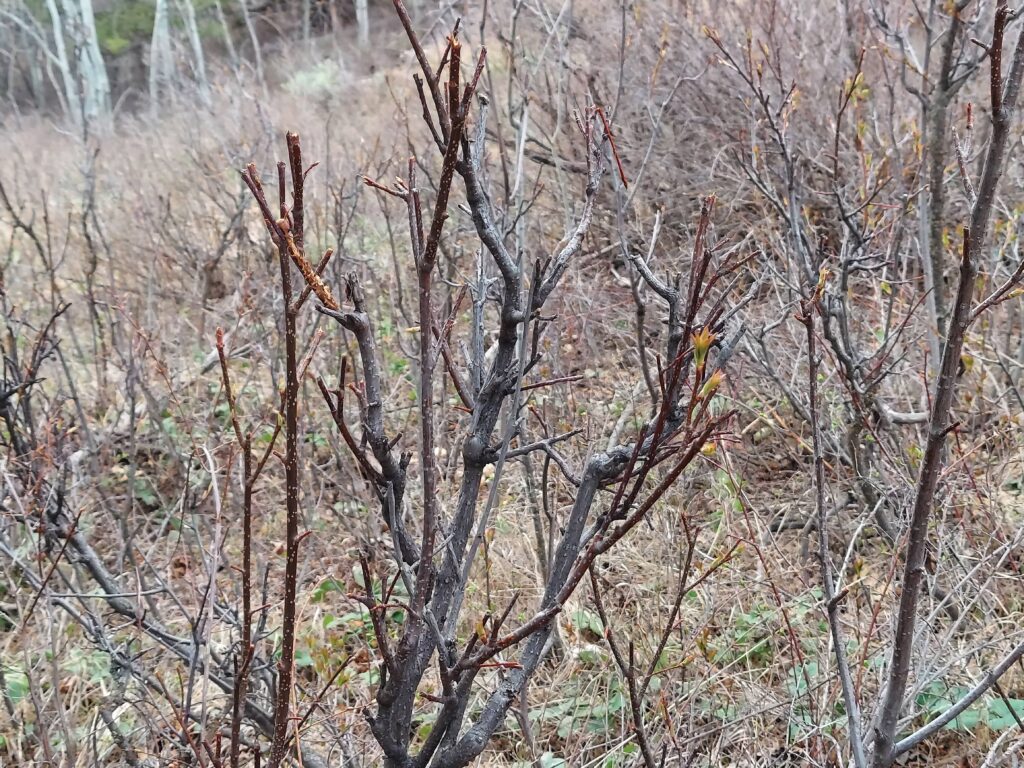Kyle Kissock
If you’ve been out exploring the Snow King area trails recently you might have noticed an unusual amount of wildlife “browse” on young aspen trees and willows.
The sheer quantity of new browse is one indicator of the importance of this low elevation habitat on the edge of town to deer and moose, which winter here.

The abundance of fresh bark stripping confirms the Snow King area was heavily used by wildlife when winter closures were in place.
While it’s normal for these species to feed on tree bark, bark isn’t necessarily a preferred food source when more nutritious options are available.
Based on the sheer abundance of browse and bark stripping along Josie’s Ridge, Sink or Swim, and other trails, it’s likely protected winter range areas were especially valuable for wildlife this year, given the above average snowpack and prolonged cold temperatures.
While wildlife clearly used the trail system and surrounding habitat, we were thrilled to hear Bridger Teton National Forest reported zero known winter range closure violations this year – a testament to the public’s awareness of the role winter range plays in helping ungulate populations conserve much needed energy.

Ungulates are the only animals that strip bark on trees. Porcupines, voles and even black bear may create similar markings.
Exactly how human presence effects wildlife behavior is complex and varies by recreation type, time of year, species impacted, and other factors.
In this case, limiting our footprint in critical areas during a challenging time of year remains one of the most useful tools we have to ensure wildlife is given every chance possible to make it through until a wider variety of habitat becomes available in the spring.
Coming off a rough winter that resulted in abnormally high statewide declines in mule deer and pronghorn, we’d like to thank you for doing your part by abiding by area closures and helping to successfully spread the word this year!

The tips of these willow branches have been munched, likely by moose. This is a common sight in the Cache Creek drainage.
Photos courtesy of Linda Merigliano
